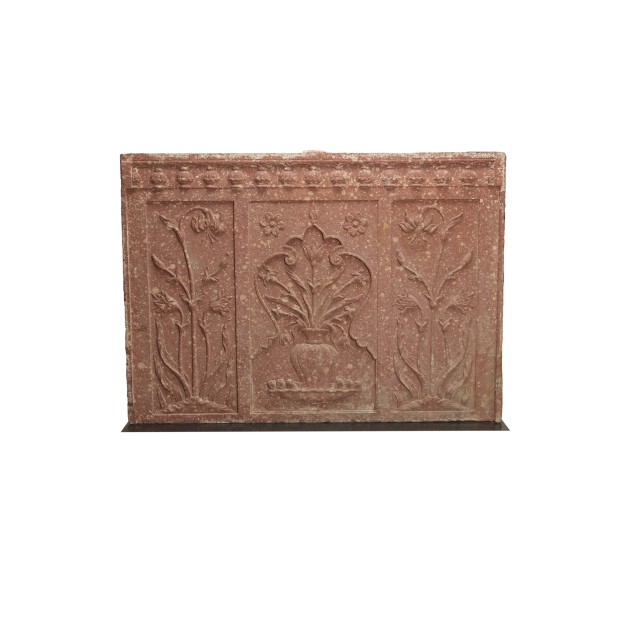
Screen

Photography by Synthescape, Digital image © Asia Society
Screen
17th century
India, Mughal
Sandstone
H. 31 x W. 42 3/4 x D. 2 1/2 in. (78.7 x 108.5 x 6.4 cm)
Asia Society, New York: Gift of Arthur Ross, 1995.2
Provenance
Arthur M. Ross; acquired from Spink & Son Ltd., London, 1995.
The Asia Society, New York, NY, bequest of Arthur M. Ross, New York, NY, January 1996.
Licensing inquiries
Architecture in India makes frequent use of elaborate stone carving, whether done for Buddhist, Jain, Hindu, or Muslim patrons. Red sandstone, used here, was one of the most popular materials in the region of Mathura, south of New Delhi. Stonework requires a great degree of skill, and was reserved for the most visible areas of a structure. Pieces like this one would have been used as decoration set in the rough stone masonry of a building. The motifs of flowers and overflowing vases can be found in contemporary Indian examples and in the Persian art of the Mughals' Timurid ancestors. It was common for Mughal rulers to send funds to Samarqand (located in present-day Uzbekistan) for the upkeep of shrines associated with their dynastic heritage. Locally, the carvings of the throne area of the Diwan-i Amm (Hall of Public Audience) at the Red Fort in Old Delhi follow a similar composition. Completed in 1648 under the rule of Shah Jahan, the Red Fort (also known as the Lal Qal'ah) contains many red sandstone walls and architectural elements with carvings of elaborate floral forms.


